1. San Diego

San Diego is pushing forward with ambitious plans to reduce car dependence and improve urban livability, according to SanDiego.org. The city’s Complete Communities initiative focuses on increasing housing density near transit hubs and expanding biking and walking infrastructure. Efforts to pedestrianize certain areas, such as the Gaslamp Quarter, have already made parts of downtown more walkable. These changes are setting the foundation for a city less reliant on cars.
Public transportation improvements are a key part of San Diego’s car-free vision. The expansion of the San Diego Trolley system and the addition of new rapid bus routes are making transit more accessible. The city is also working to reduce parking requirements for new developments, discouraging car ownership. With these efforts, San Diego is on track to become one of the leading car-free cities by 2035.
2. New York City

New York City is taking bold steps to reduce car dependency, The New York Times reports. In 2022, the state initiated plans to ban the sale of new gas-powered cars and trucks by 2035, following California’s lead. The city has also expanded bike lanes and pedestrian zones, notably transforming areas like Times Square into pedestrian plazas. These initiatives aim to enhance walkability and reduce emissions, paving the way for a car-free future.
Moreover, New York has implemented congestion pricing in parts of Manhattan to discourage car use. The city is also investing in public transportation, with projects like the Second Avenue Subway expansion. Efforts to electrify the municipal vehicle fleet are underway, targeting a fully electric fleet by 2040. These combined strategies reflect New York’s commitment to sustainable urban mobility.
3. Los Angeles
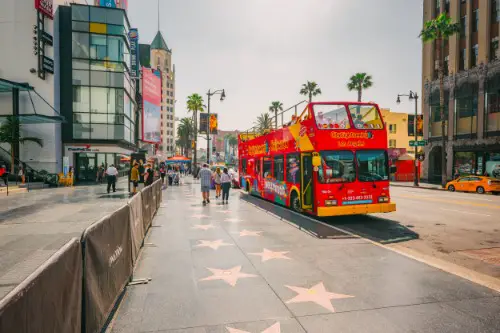
Los Angeles, often synonymous with car culture, is reimagining its transportation landscape, The Guardian reports. The city has set an ambitious goal to achieve zero emissions from transportation by 2030, focusing on enhancing public transit and promoting active transportation. Initiatives include expanding metro lines and creating pedestrian-friendly spaces. These steps aim to reduce car reliance and transform LA into a more sustainable city.
In 2024, Los Angeles voters approved Measure HLA, mandating that all repaving projects incorporate elements from the city’s Mobility Plan 2035, such as bike lanes and improved sidewalks. This policy ensures that infrastructure developments prioritize non-car modes of transportation. The city is also investing in electric buses and exploring innovative solutions like aerial gondolas to enhance mobility.
4. Seattle
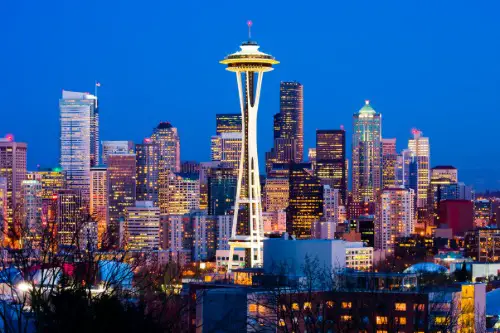
Seattle is making significant strides toward reducing car dependency, according to the Seattle Transit Blog. The city has implemented the “Stay Healthy Streets” program, designating over 25 miles of streets for pedestrians, cyclists, and local traffic only. This initiative promotes active transportation and enhances community engagement by providing safe spaces for recreation. Additionally, Seattle’s commitment to a fossil-fuel-free municipal fleet by 2030 underscores its dedication to sustainable urban mobility.
The city’s public transportation system is continually expanding, with investments in light rail and bus rapid transit lines. Seattle also encourages biking through extensive bike lane networks and bike-sharing programs. Neighborhoods like Capitol Hill and the University District are becoming increasingly pedestrian-friendly, with proposals to pedestrianize areas such as “The Ave” in the U District. These combined efforts are paving the way for a car-free Seattle by 2035.
5. Portland

Portland, known for its progressive urban planning, is working toward reducing car dependence, according to The New York Times. The city’s Climate Action Plan includes goals to reduce vehicle miles traveled and increase the use of public transit, biking, and walking. Portland is expanding its network of bike lanes and pedestrian-friendly infrastructure to encourage alternative modes of transportation.
The city has also invested in a comprehensive public transit system, including light rail and bus services, to provide viable alternatives to car travel. Portland’s urban growth boundary policy limits urban sprawl, promoting higher-density, walkable neighborhoods. These efforts aim to create a more sustainable and car-free urban environment by 2035.
6. Austin
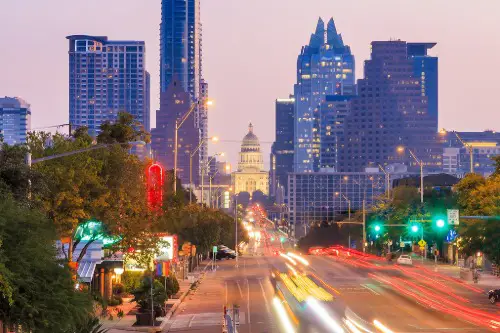
Austin is embracing initiatives to reduce car dependency and enhance urban mobility. The city has committed to the Fossil-Fuel-Free Streets Declaration, aiming to transition to zero-emission vehicles and make major areas car-free by 2030. Projects like the Waterloo Greenway, a 1.5-mile car-free corridor providing 35 acres of pedestrian and bike space through the heart of the city, exemplify this commitment.
Austin is also investing in expanding its public transit options, including light rail and rapid bus services, to offer residents viable alternatives to car travel. The city’s Complete Streets policy ensures that transportation planning considers all users, promoting safer and more accessible streets for pedestrians and cyclists. These combined efforts are paving the way for a car-free Austin by 2035.
7. Boston
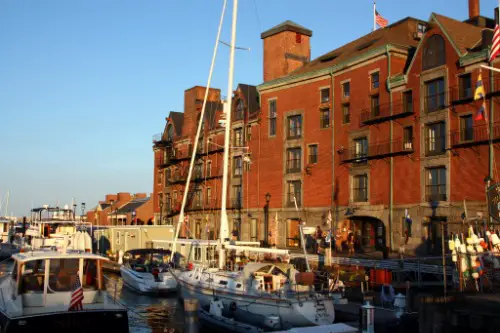
Boston is taking steps to reduce car usage and promote sustainable transportation. The city’s Go Boston 2030 plan sets goals to increase the share of trips made by walking, biking, and public transit. Initiatives include expanding bike lanes, improving pedestrian infrastructure, and enhancing public transit services.
Boston is also exploring the implementation of car-free zones in certain areas to create more pedestrian-friendly spaces. The city is investing in transit-oriented development to encourage higher-density, walkable neighborhoods near public transit hubs. These strategies aim to reduce reliance on private vehicles and move toward a car-free Boston by 2035.
8. Minneapolis
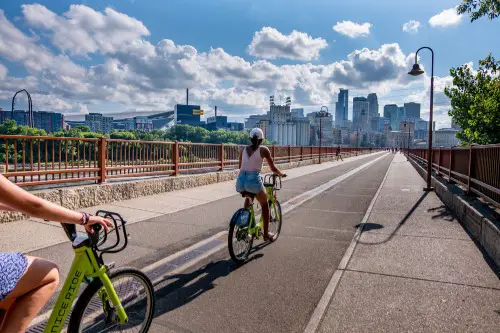
Minneapolis is making bold moves to reduce car dependency and create a more walkable city. The city’s Transportation Action Plan aims for 60% of all trips to be made by walking, biking, or public transit by 2030. To reach this goal, Minneapolis has invested heavily in bike infrastructure, adding miles of protected bike lanes and expanding its Nice Ride bike-share program. The city is also redesigning key corridors to prioritize pedestrians and cyclists over cars, making urban travel safer and more accessible.
Public transit improvements are also a major part of the city’s strategy. The expansion of the Metro Transit light rail system and Bus Rapid Transit (BRT) lines will provide reliable alternatives to car travel. The city has also experimented with car-free zones, such as its summer closures of Nicollet Mall to personal vehicles. These combined efforts put Minneapolis on track to becoming a car-free city by 2035.
9. Chicago
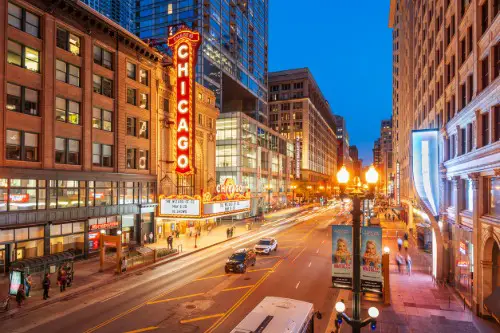
Chicago is taking major steps toward a more car-free future with its commitment to sustainable transportation. The city’s Chicago Streets for Cycling Plan aims to create a 645-mile network of protected bike lanes by 2025, making cycling a safer and more attractive option. Additionally, Chicago’s Divvy bike-share system has expanded, providing thousands of rental bikes throughout the city. These changes are making it easier for residents to choose biking and walking over driving.
Public transit is also at the heart of Chicago’s push to reduce car reliance. The city is modernizing its CTA bus and train systems, improving frequency and reliability to encourage ridership. Plans to pedestrianize key downtown areas, such as portions of State Street, are also gaining momentum. With these developments, Chicago is laying the groundwork for a car-free future by 2035.
10. Washington, D.C.

Washington, D.C., has long been a leader in public transit and pedestrian-friendly initiatives. The city’s Vision Zero plan is focused on eliminating traffic fatalities while also making streets safer for cyclists and pedestrians. Investments in bike lanes, bus-only lanes, and expanded sidewalks have transformed the city’s transportation landscape. These efforts, coupled with policies discouraging car use, are helping D.C. transition away from private vehicles.
Metro improvements are also playing a key role in the city’s shift toward a car-free future. The Washington Metropolitan Area Transit Authority (WMATA) is expanding train service and modernizing stations to improve the rider experience. The city has also piloted car-free streets, such as 18th Street in Adams Morgan on weekends, to encourage walkability. By 2035, these efforts will make Washington, D.C., one of the most pedestrian-friendly cities in the country.
11. Denver

Denver is reshaping its urban environment to prioritize walking, biking, and public transit over car travel. The city’s Denver Moves plan envisions a vast network of bike lanes, pedestrian-friendly streets, and improved transit options. With major investments in protected bike lanes and car-free spaces, Denver is becoming less car-dependent each year. Efforts like the 16th Street Mall, which is permanently closed to private vehicles, showcase the city’s commitment to sustainable mobility.
The city’s RTD (Regional Transportation District) system is also expanding, making public transit more convenient and accessible. Denver has introduced new bus rapid transit lines and continues to improve light rail service to encourage more people to leave their cars behind. As part of its climate action goals, Denver aims to eliminate single-occupancy vehicle trips as much as possible. With these efforts, Denver is well on its way to being a car-free city by 2035.
12. San Francisco

San Francisco is actively pursuing a reduction in car usage to improve urban livability. The city has set a target for 80% of trips to be made by sustainable modes of transportation by 2030. This includes walking, biking, and public transit. To achieve this, San Francisco is investing in protected bike lanes, pedestrian plazas, and transit infrastructure improvements.
The city has also implemented car-free zones in areas like Market Street, one of its busiest thoroughfares. This move has improved safety and accessibility for pedestrians and cyclists. San Francisco’s commitment to reducing greenhouse gas emissions is evident in its transportation policies, which aim to decrease reliance on private vehicles. These initiatives are steering the city toward a car-free future by 2035.


